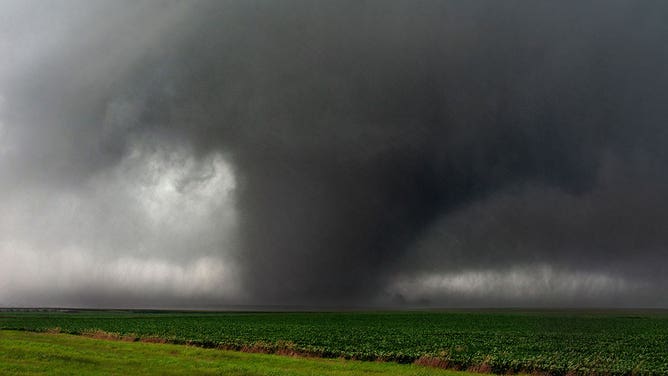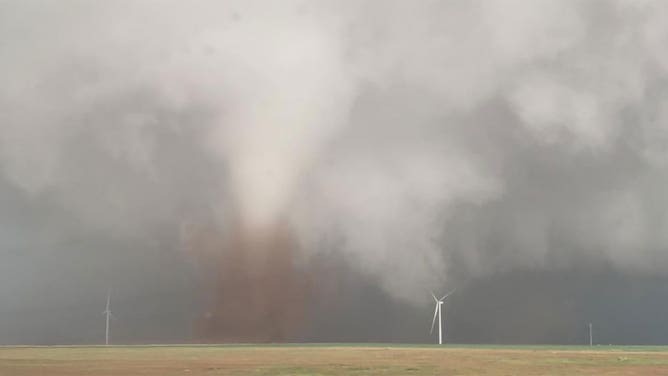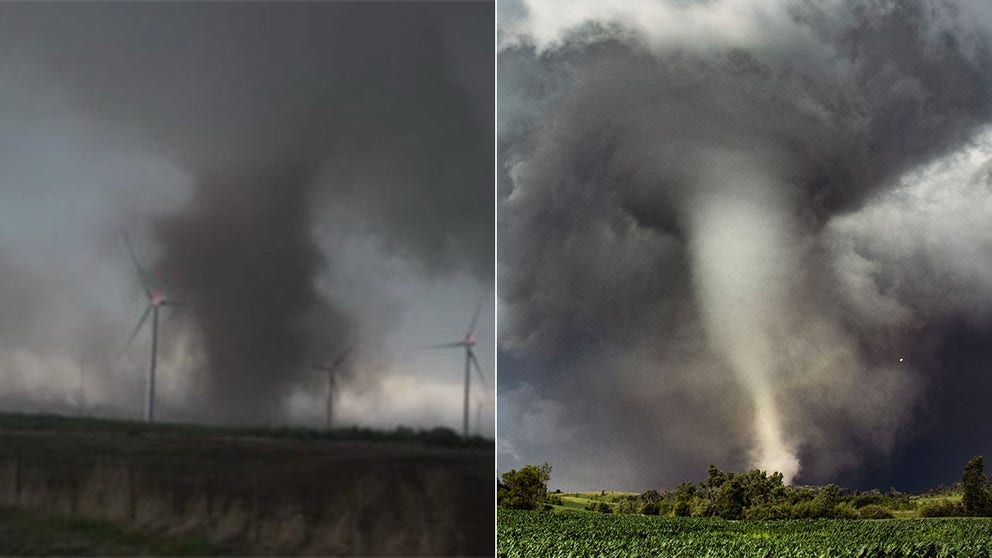Want to be a storm chaser? Here’s what the pros say you need to know
Brett Adair and Melanie Metz have been chasing storms for 2 decades and offer advice to future chasers
Advice to future storm chasers from 2 pros
Brett Adair and Melanie Metz have been chasing storms for two decades. They have some advice for people interested in joining their field.
When Mother Nature does her worst, storm chasers gear up and head toward the most violent storms on the planet.
Brett Adair, based in Alabama, and Melanie Metz, based in Minnesota, have been doing just that for about two decades. Their names might sound familiar because they pass along photos and videos about the storms they are tracking to FOX Weather and other media outlets. They also relay valuable, real-time information to the National Weather Service, which is used to help formulate weather alerts.
Adair is a trained meteorologist who began chasing storms in his local area before he was out of high school.
"My high school graduation gift to myself was to go and chase back in 2004," Adair said. "I ended up chasing one of the high-risk days."
Adair has turned his excitement for the elements into a job, owning and operating Live Storms Media.
'DESTRUCTIVE' THUNDERSTORM ALERTS: WHAT THEY ARE AND WHY THE NATIONAL WEATHER SERVICE ISSUES THEM
Metz said she studied meteorology in college for a bit but ended up going another route. However, that did not stop her from chasing her lifelong love of storms.
"Ever since I was a child living in Arizona, I would dream about tornadoes all the time," Metz said. "I don't know why or where that comes from. I was just simply fascinated. So, when I got older, I ended up studying the science behind storms and severe weather."
Metz is now part of a group called "Girls Who Chase," aimed at increasing the visibility of women chasers and helping them pursue their passions. Read more about the group and its mission here.
Both Adair and Metz said chasing storms can not only be incredibly rewarding but also extremely dangerous. Just this month, a van owned by a storm chasing tour group was caught in a tornado in Texas. Four storm chasers have been killed in crashes this year, as well.
If you find yourself drawn to storm chasing, these veteran trackers of terrible weather have some advice to help you do so safely.

A tornado in Iowa is seen in this photo taken by Melanie Metz.
(Melanie Metz/Girls Who Chase)
Educate yourself
Both Adair and Metz said that in addition to their meteorology classes, they also took advantage of free classes offered by the National Weather Service. The Skywarn classes are aimed at helping people better understand storms and identify features that indicate severe weather.
"So, if you can't take your class at the university or want somewhere to start, a Skywarn class is always a good place to at least start to get a basic understanding of the storm," Metz said.
If you want to know what it’s like to attend a Skywarn class, check out this story.
Adair also encouraged people to check out MetEd, a free collection of training resources for people interested in meteorology.
"They will literally teach you radar meteorology, satellite meteorology, mesoscale meteorology -- all of those really important tools that you need to know about," Adair said.
Ride along
Adair and Metz also recommend that you ride along with experienced storm chasers before you start going after them yourself.
"Some of these guys will do a ride-along so that you can kind of see the process instead of just taking yourself out there and maybe putting yourself in a position that you're not used to," Adair said.
WE ALL LOVE THE MOVIE 'TWISTER,' BUT IS IT SCIENTIFICALLY ACCURATE?
Metz said a storm-chasing tour is another great way to get your feet wet, but you should do your research before signing up.
"There are some, in particular, I know that have been around quite a while and are pretty reputable and have really good forecasters and good leaders on their team," Metz said. "So do research and sign up for a storm-chasing tour. (That) is one way that you can really start to understand and learn the aspects of chasing, from actually being in the field -- just real hands-on experience."
Plan, but think on your feet
These experienced chasers also said knowing where you are in relation to the storm and having a way to escape danger is extremely important.
"You have to be looking at the road networks, not only where you're at, but sometimes we're in areas where the roads -- we don't have good road networks," Metz said. "There might only be a couple road options, and especially in those cases, it's important to make sure you don't take that road that's going to put you right in the path of that storm."
Adair said sometimes your planned route might have to change based on the weather. He said he has been caught in sudden fog brought on by cold hailstones that were dropped by a storm. He said he’s also found the road he was on suddenly covered by feet of water because of flash flooding.
"Your mind has to be like the atmosphere," Adair said. "It has to be fluid and ever-changing for the situation that you're dealing with. If it's not, you can get into trouble really, really quick."

A tornado is seen in this photo taken by Brett Adair.
(Brett Adair/Live Storms Media)
Watch the traffic, not just the storm
Adair and Metz both said that driving and traffic is one of the most dangerous aspects of storm chasing nowadays.
Adair said technology such as GPS, the widely available nature of radar data and social media has led to many more chasers being on the road. He said this means you not only have to be watching the storm, but also all other vehicles around you.
"When I'm on the road now, I'm more worried about the vehicles than I am the storm or the tornado that I'm watching because there are just so many people out there," Adair said.
WHY YOUR WINDOWS RATTLE FROM THUNDER AND LIGHTNING
Metz said she has already narrowly avoided two crashes this year because other drivers were not paying attention.
"There have been more deaths, unfortunately, of chasers from traffic accidents than from actually tornadoes or the storm," Metz said. "So, it’s very, very important to drive safely and be hyper-aware when you’re navigating around that storm."
Four storm chasers have died in crashes this year. One, a meteorologist from Mexico City, was killed in Minnesota in May. Three students from the University of Oklahoma died in a crash while driving home from a chase in April.
